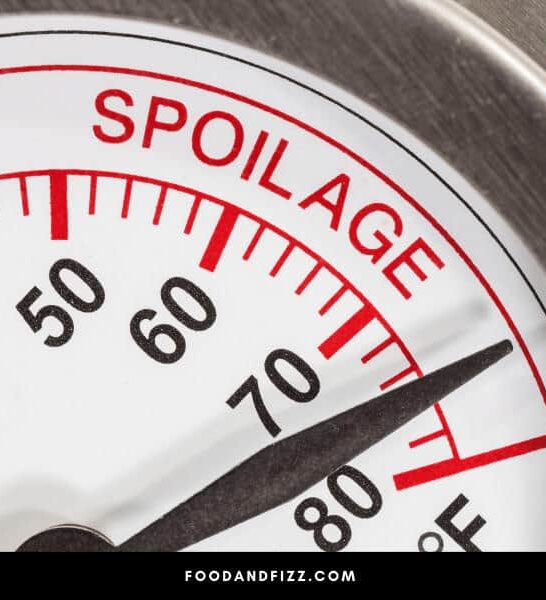We all know that leftover food needs to be refrigerated. Bacteria grow more quickly at warm temperatures, and food stored at room temperature can cause salmonella or other food-borne illnesses. But how cold is cold enough?
Is 45 Degrees A Safe Temperature For A Refrigerator?
A temperature of 45 degrees isn’t safe as it isn’t cold enough for a refrigerator. The United States Food and Drug Administration recommends that your refrigerator be kept at 40 degrees, which is the optimal temperature to slow food spoilage. Eating food stored at 45 degrees for longer than two hours puts you and your family at risk of a food-borne illness.
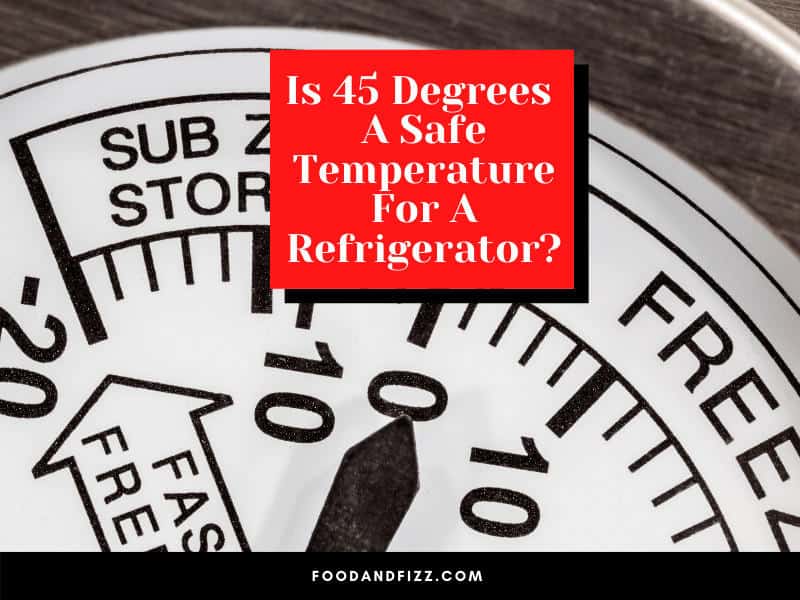
Bacteria Hate the Cold
Your refrigerator is one of your best weapons against food-borne bacterial infections. Think of it this way. Bacteria are living organisms, just like we humans are, and they thrive at about the same temperatures that we enjoy.
Most of us prefer room temperatures of about 70 or 75 degrees, and bacteria thrive and multiply rapidly at that temperature.
When the temperature drops into the 40s, the bacteria, like us, start to get a little uncomfortable. Still, some hardy bacteria can survive and multiply at temperatures as cold as the low 40s.
So, while you don’t want your refrigerator cold enough to freeze your food, you do need to keep it at 40 degrees to prevent bacteria growth.

Take Special Care with Meat and Dairy
While 40 degrees is ideal, fruits and vegetables can usually withstand slightly warmer temperatures for a little while, and these foods can even withstand a power outage of a few hours.
Meat and dairy spoil quickly, though, so if you do have a power outage, inspect these foods carefully and discard them if they have a sour smell or strange color.
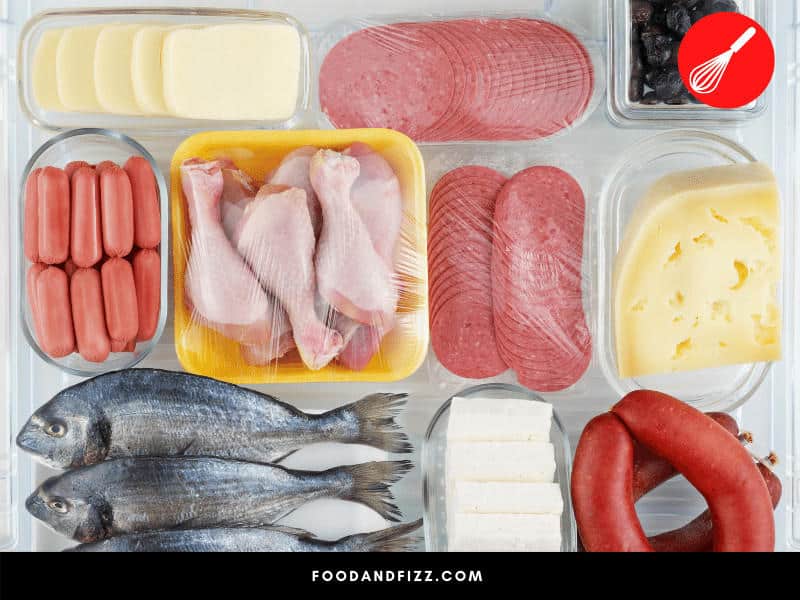
Checking Your Refrigerator’s Temperature
But how can you be sure that your refrigerator is the perfect 40 degrees? Few refrigerator controls show the actual temperature, and opening the door and placing your hand inside isn’t a reliable method.
The air in the refrigerator will feel cold on your 98-degree skin, but it may still be too warm for your stored food.
Instead of relying on your sense of touch, you need to buy a free-standing refrigerator thermometer and place it in a central spot inside the refrigerator. It is the only way to make sure that your food is safely stored.
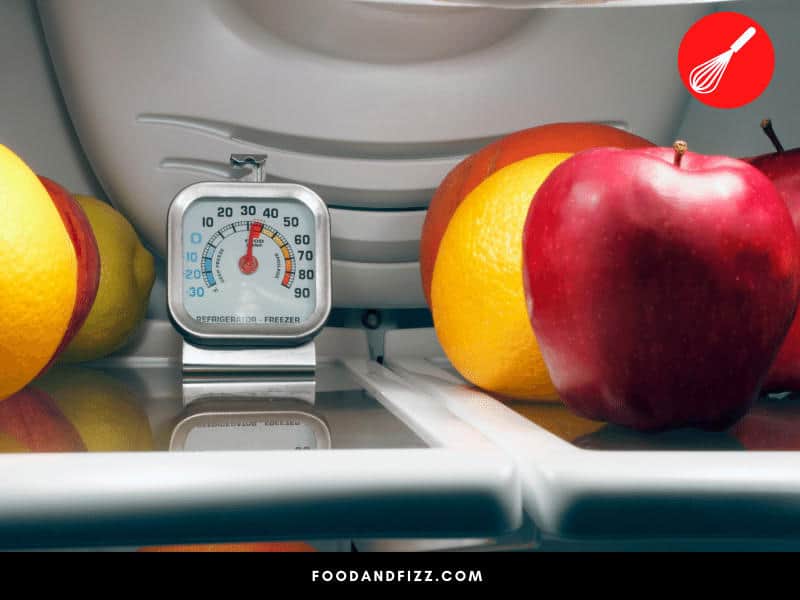
Some Tips For A Cold Refrigerator
While 45 degrees isn’t cold enough for your refrigerator, it can sometimes seem challenging to be sure that your refrigerator is at the recommended 40 degrees.
Make sure that you use a thermometer, and that you consult it often. Also, make sure that you place it near the door because that’s usually the warmest spot in the refrigerator.
Remember, too, that cold items need to circulate around the stored items in your refrigerator to keep them properly chilled, so don’t pack items too tightly. In addition, store your foods in an airtight container and cover them to seal in the cold.
How Does A Cold Refrigerator Become Too Warm?
If you’re like most people, you probably keep your house at about 75 degrees. It could get even hotter in your kitchen because cooking and baking can elevate the kitchen temperature.
If you don’t have air-conditioning, or it the air-conditioning breaks down, it’s going to get even warmer in the summer.
So, your warm kitchen is way too hot for proper food storage, and that hot air will rush into your refrigerator each time the door’s opened. That blast of heat can warm up your refrigerator quickly, so it’s important to measure the temperature near the door.
It’s also very important not to hold the door open too long because warm air can circulate quickly throughout the entire refrigerator.
Don’t Hold That Door Open Too Long!
The best solution is to open the refrigerator door as little as possible and, when you do open it, quickly retrieve the items that you need and close the door.
Sometimes, however, when you’re cooking, it’s necessary to open the door more frequently, but try to close it as quickly as possible. Of course, it helps to keep the refrigerator well organized so that you can find what you want quickly.
It’s also important to monitor family members, particularly children, who tend to open the refrigerator door often to search for snacks. Some children even hold the door open while they’re searching for a glass and pouring juice!
Try to discourage this practice and teach children about the importance of food safety and the need to close the refrigerator door quickly. Your food will stay fresh longer, and they’ll get an important lesson in food safety!
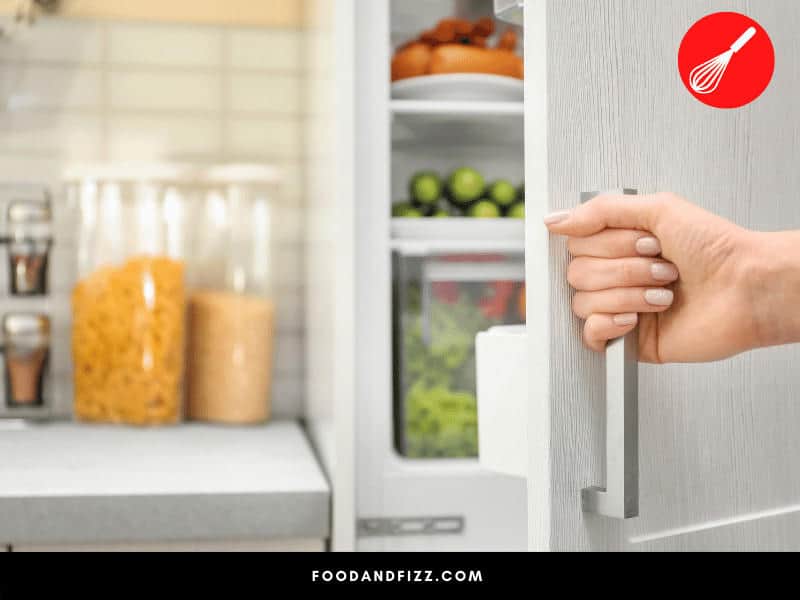
Be Careful With Power Outages
It’s necessary to check your refrigerator thermometer after a power outage. If it’s been above 40 degrees in your refrigerator for more than two hours, check the items carefully and discard any that show signs of spoiling.
This is particularly important with meat and dairy, which spoil more easily than vegetables.
Conclusion On Is 45 Degrees A Safe Temperature For A Refrigerator
So, remember, 45 degrees isn’t a safe temperature for your refrigerator. You need to keep it at 40 degrees, and the only way to be sure that it’s at the proper temperature is to buy a free-standing refrigerator thermometer.
Place it in the warmest spot of the refrigerator, which is usually near the door, and check it often. Try to avoid opening the door too frequently or holding it open for too long, and make sure to check the temperature after a power outage!
Frequently Asked Questions on Is 45 Degrees A Safe Temperature For A Refrigerator?
Why Is It So Important to Keep My Refrigerator This Cold?
At room temperature, the number of bacteria that can cause food-borne illnesses can double every 20 minutes. While this rate slows when the temperature gets down to 45 degrees, that’s still warm enough to allow some dangerous bacteria to survive and reproduce. You don’t want to subject yourself and your family to a food-borne illness.
How Can I Be Sure That My Refrigerator Isn’t Too Warm?
Because most refrigerators don’t come equipped with a thermostat, you need to purchase a free-standing refrigerator thermometer and check it regularly.
Where Should I Place My Refrigerator Thermometer?
Place your refrigerator in the warmest spot of the refrigerator, usually near the door.

